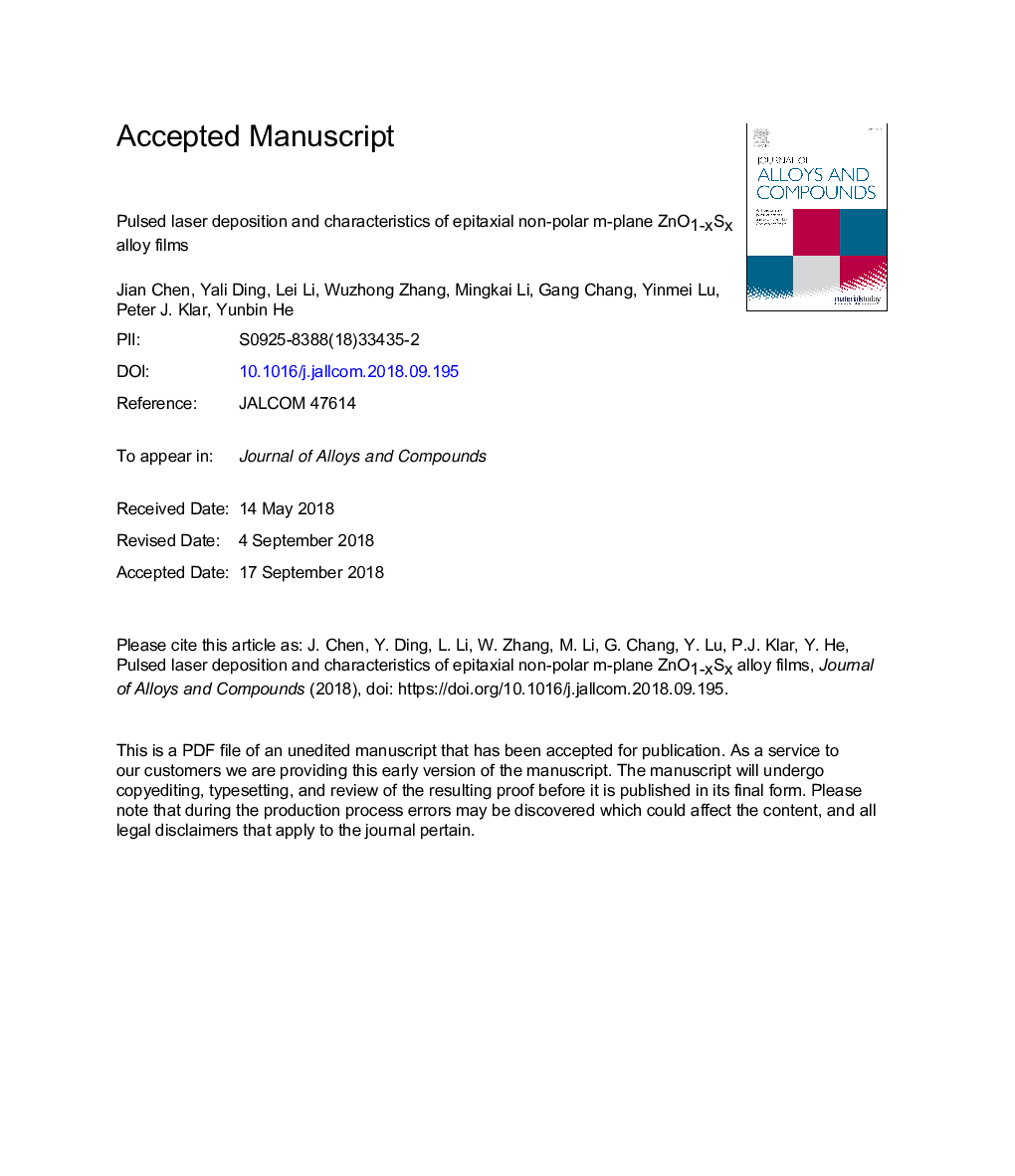| Article ID | Journal | Published Year | Pages | File Type |
|---|---|---|---|---|
| 11020000 | Journal of Alloys and Compounds | 2019 | 26 Pages |
Abstract
Non-polar m-plane ZnO1-xSx (ZnOS) thin films were grown epitaxially on m-plane sapphire using pulsed laser deposition for the first time. Effects of the growth temperature on the surface morphology, as well as on the structural and optical properties of the films were investigated. The S content in the ZnO1-xSx alloy films was adjusted by controlling the substrate temperature. X-ray diffraction analyses revealed that, the ternary ZnO1-xSx films changed from polycrystalline to monocrystalline-like with increasing growth temperature, and m-plane orientated ZnO1-xSx thin films were achieved at temperatures above 400â¯Â°C. The films with S content below 28â¯at% exhibit a unique non-polar (101¯0) orientation. For the films grown at 300â¯Â°C with S content above 34â¯at%, however, additional diffraction peaks from (0002) and (112¯0) planes are present. The Ï-scan patterns suggest the following in-plane epitaxial relationship: ZnOS(0001) || sapphire(12¯10) and ZnOS(12¯10) || sapphire(0001). With the S content increasing from 12â¯at% to 28â¯at%, the lattice constant a of m-plane ZnO1-xSx films expands monotonically from 3.299 to 3.698â¯Ã
, while their optical bandgaps decrease from 3.05 to 2.95â¯eV. Differing from the c-plane ZnOS films, the m-plane ZnOS films exhibit anisotropic crystalline quality, extended S solubility, and nearly non-bowing bandgap tunability with the S content. This first-hand information is useful for future rational design of m-ZnOS-based junctions and optoelectronic devices.
Related Topics
Physical Sciences and Engineering
Materials Science
Metals and Alloys
Authors
Jian Chen, Yali Ding, Lei Li, Wuzhong Zhang, Mingkai Li, Gang Chang, Yinmei Lu, Peter J. Klar, Yunbin He,
